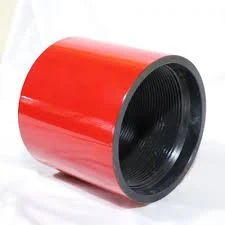- Afrikaans
- Albanian
- Amharic
- Arabic
- Armenian
- Azerbaijani
- Basque
- Belarusian
- Bengali
- Bosnian
- Bulgarian
- Catalan
- Cebuano
- Corsican
- Croatian
- Czech
- Danish
- Dutch
- English
- Esperanto
- Estonian
- Finnish
- French
- Frisian
- Galician
- Georgian
- German
- Greek
- Gujarati
- Haitian Creole
- hausa
- hawaiian
- Hebrew
- Hindi
- Miao
- Hungarian
- Icelandic
- igbo
- Indonesian
- irish
- Italian
- Japanese
- Javanese
- Kannada
- kazakh
- Khmer
- Rwandese
- Korean
- Kurdish
- Kyrgyz
- Lao
- Latin
- Latvian
- Lithuanian
- Luxembourgish
- Macedonian
- Malgashi
- Malay
- Malayalam
- Maltese
- Maori
- Marathi
- Mongolian
- Myanmar
- Nepali
- Norwegian
- Norwegian
- Occitan
- Pashto
- Persian
- Polish
- Portuguese
- Punjabi
- Romanian
- Russian
- Samoan
- Scottish Gaelic
- Serbian
- Sesotho
- Shona
- Sindhi
- Sinhala
- Slovak
- Slovenian
- Somali
- Spanish
- Sundanese
- Swahili
- Swedish
- Tagalog
- Tajik
- Tamil
- Tatar
- Telugu
- Thai
- Turkish
- Turkmen
- Ukrainian
- Urdu
- Uighur
- Uzbek
- Vietnamese
- Welsh
- Bantu
- Yiddish
- Yoruba
- Zulu
Exploring the Interconnection of Systems in Coupling Mechanisms and Their Applications
Understanding Coupling and Its Importance in Engineering
Coupling is a fundamental concept in various fields of engineering, particularly in mechanical and electrical systems. It refers to the connection between two or more components that enables them to work together to perform a specific function. There are various types of couplings depending on the application, and understanding their roles can lead to enhanced performance and efficiency in engineering systems.
In mechanical engineering, couplings serve to transmit power from one rotating shaft to another. This is crucial in machinery where the alignment of shafts may not always be perfect. Various types of mechanical couplings exist, including flexible couplings, rigid couplings, and fluid couplings. Each of these has distinct characteristics that make them suitable for different applications.
Flexible Couplings
Flexible couplings are designed to accommodate misalignments between two shafts. They can absorb shock loads and vibrations, which helps in protecting machinery components. Common types include elastomeric couplings, which use a rubber material to provide flexibility and damping, and gear couplings, which leverage gear teeth to transmit power while allowing for some misalignment. These couplings are pivotal in applications where precision isn't absolute, such as in industrial drives and automotive systems.
Rigid Couplings
On the other hand, rigid couplings are used in situations where precise shaft alignment is critical. They provide a solid connection between shafts, ensuring that no relative motion occurs at the joint. This type of coupling is ideal in applications where high torque transmission is necessary, such as in heavy machinery and high-speed motors. However, rigid couplings cannot compensate for misalignment, which can lead to increased wear and mechanical failure if shafts are not perfectly aligned.
Fluid Couplings
coupling blank

Fluid couplings utilize hydraulic fluid to transmit power from one shaft to another. They are particularly advantageous in applications that require a smooth start, as they can limit the amount of torque transmitted at startup, thereby reducing stress on components. Fluid couplings are widely used in large machinery, such as conveyor systems and crushers, where controlled acceleration is necessary to avoid mechanical failures.
Importance of Coupling in Electrical Systems
Coupling is equally significant in electrical engineering, where it refers to the interaction between two or more circuits. The concept of electromagnetic coupling, for example, plays a crucial role in transformers, where the magnetic field generated by one coil induces a voltage in another coil. Understanding the principles of coupling in electrical systems is essential for the design of efficient circuits and systems.
Design Considerations
When selecting a coupling for a specific application, engineers must consider several factors, including the type of load, speed, alignment, and torque requirements. The material and construction of the coupling can also impact performance and durability. Engineers often conduct comprehensive analysis and testing to ensure that the chosen coupling will effectively meet the operational demands of the system.
Conclusion
In summary, coupling is an essential concept in both mechanical and electrical engineering. The right coupling can enhance the performance, reliability, and efficiency of systems, while a poor choice may lead to failures and inefficiencies. As technology continues to advance, the development of new coupling methods and materials is likely, paving the way for even more sophisticated and efficient systems in the future. Understanding the intricacies of coupling not only aids in optimal design and function but also facilitates innovation across various engineering disciplines.
-
Well Casing Extension Couplings – Applications and InstallationNewsJun.06,2025
-
Types of Crossover Subs in Drilling & CompletionNewsJun.06,2025
-
Key Features of High-Quality Tubing Pup JointsNewsJun.06,2025
-
Installation and Maintenance Tips for Steel Couplings for PipeNewsJun.06,2025
-
How to Select the Right Pup Joint for Oil & Gas OperationsNewsJun.06,2025
-
Applications of Stainless Steel Pipe CouplingsNewsJun.06,2025







